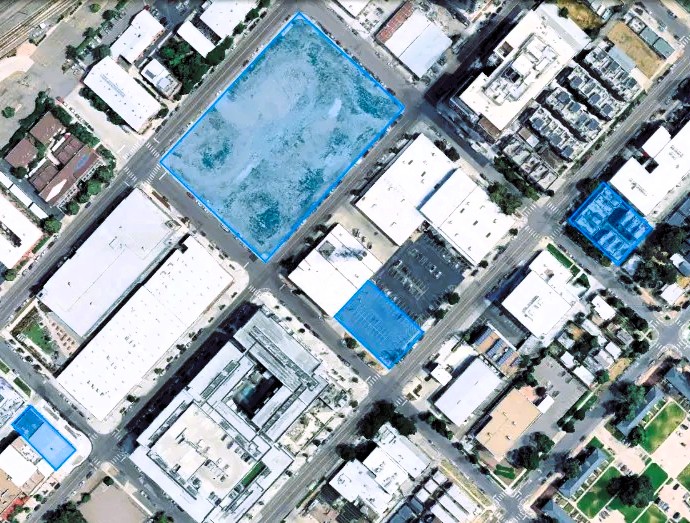A fractional Chief Development Officer (CDO) provides the leadership structure that many organizations lack in real estate. With expertise in acquisitions, entitlements, and development strategy, the role brings clarity to complex decisions that often stall or move forward without the right evaluation.
Unlike traditional consultants, a fractional CDO is embedded in your process. They integrate with your team, bring discipline to decision-making, and establish repeatable frameworks that reduce uncertainty.
For clients, the result is accelerated execution and fewer missed opportunities. By professionalizing the development function, organizations strengthen their portfolios while controlling costs.
Benefits:
● Faster, better-informed real estate decisions
● Professionalized structure without adding full-time executives
● Risk reduction through disciplined planning


Real estate growth requires more than opportunity. It requires planning. A fractional Chief Development Officer (CDO) brings the discipline needed to balance ambition with risk, ensuring that each decision strengthens long-term portfolio value.
Growth priorities are evaluated within a structured framework that considers capital allocation, phasing strategies, and market conditions. By coordinating these elements, the fractional CDO helps families and investors move beyond opportunistic growth and toward deliberate portfolio expansion.
This level of structured planning provides clarity and confidence. Clients know that every investment is backed by executive-level oversight and aligned with governance, capital strategy, and risk tolerance.
Benefits:
● Disciplined portfolio planning that aligns with capital and governance
● Balanced growth strategies that reduce exposure to risk
● Independent oversight that improves capital allocation decisions
● Sustainable expansion guided by executive-level leadership

Effective real estate portfolios demand more than asset growth. They require governance. A fractional Chief Development Officer (CDO) establishes the decision frameworks and oversight needed to align every move with capital strategy, family objectives, and risk tolerance.
Integration ensures no function operates in a silo. Accounting, legal, property management, and construction are brought into one unified strategy, reducing conflicts and creating clarity in execution. With structured governance, the entire portfolio moves forward in sync rather than piecemeal.
This model delivers the transparency and accountability expected from institutional investors, but in a flexible structure tailored to families and growing organizations. Clients gain confidence that every decision is measured, deliberate, and aligned with long-term strategy.
Benefits:
● Unified governance structure across all real estate assets
● Integration of capital, operations, and compliance into one system
● Institutional-level accountability without institutional overhead
● Clear decision frameworks that reduce risk and bottlenecks

Complex real estate decisions benefit from multiple perspectives. A fractional Chief Development Officer (CDO) gives clients access to an advisor board model that combines expertise from finance, design, construction, and operations. This structure strengthens decision-making while avoiding the cost of building a full in-house team.
The advisor board is not an informal group of consultants. It is a coordinated resource led by the fractional CDO, who ensures input is integrated and aligned with portfolio strategy. This creates clarity for clients and prevents conflicting advice that slows progress.
With advisor board leverage, clients move forward faster and with greater confidence. They benefit from institutional-quality insight delivered through a flexible structure designed to fit their organization.
Benefits:
● Access to multi-disciplinary expertise without permanent overhead
● Coordinated input managed by a fractional CDO
● Faster execution with fewer blind spots
● Structured decision support that improves portfolio outcomes
How owners shift from ad hoc decisions to a durable operating model with clear roles and systems.
Read WhitepaperData‑backed playbook for where to expand, how to prioritize capital, and how to standardize go or no‑go calls.
Read Case StudyGovernance and succession practices that keep portfolios aligned across generations.
Read WhitepaperA scalable oversight system that keeps builds aligned with budget and intent across locations.
Read Case StudyOrganizations typically seek this support when:
● Growth plans outpace internal decision capacity
● Functions operate in silos and deals stall at handoffs
● There is no consistent investment thesis, hurdle rates, or stage‑gate criteria
● Capital partners ask for institutional reporting and governance
● Portfolio complexity increases across markets or asset types
● No single owner drives pipeline, prioritization, and resourcing
● Underwriting and post‑mortems are inconsistent or undocumented
● Succession or leadership transition requires neutral executive oversight
Entry point: Portfolio Readiness Diagnostic that maps gaps in strategy, governance, and execution.